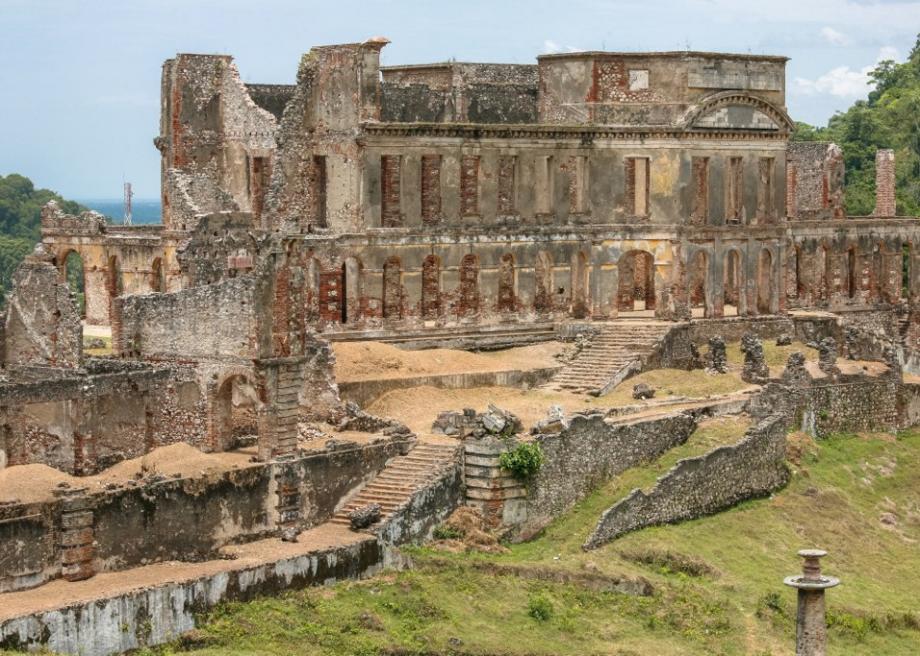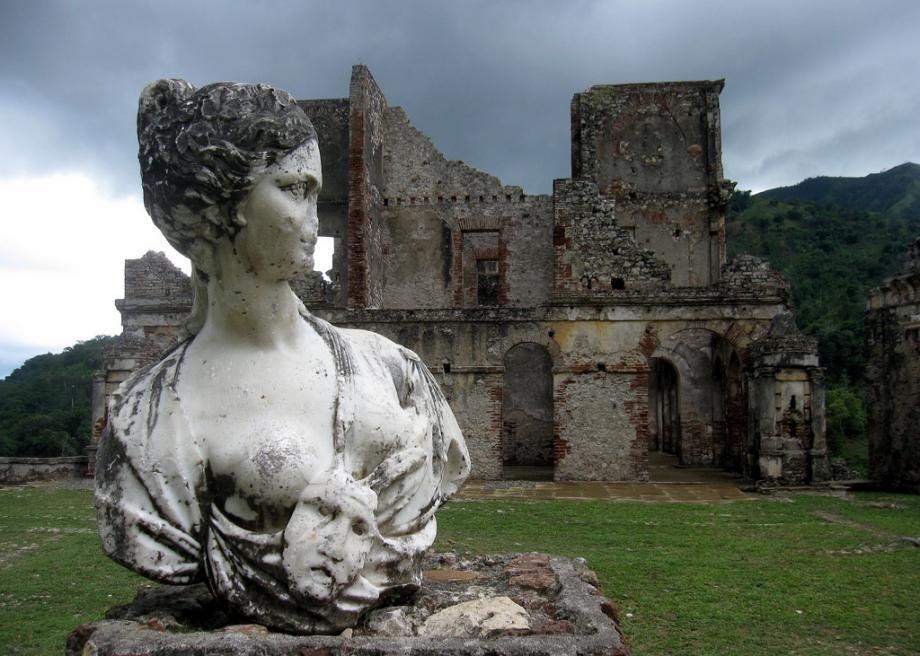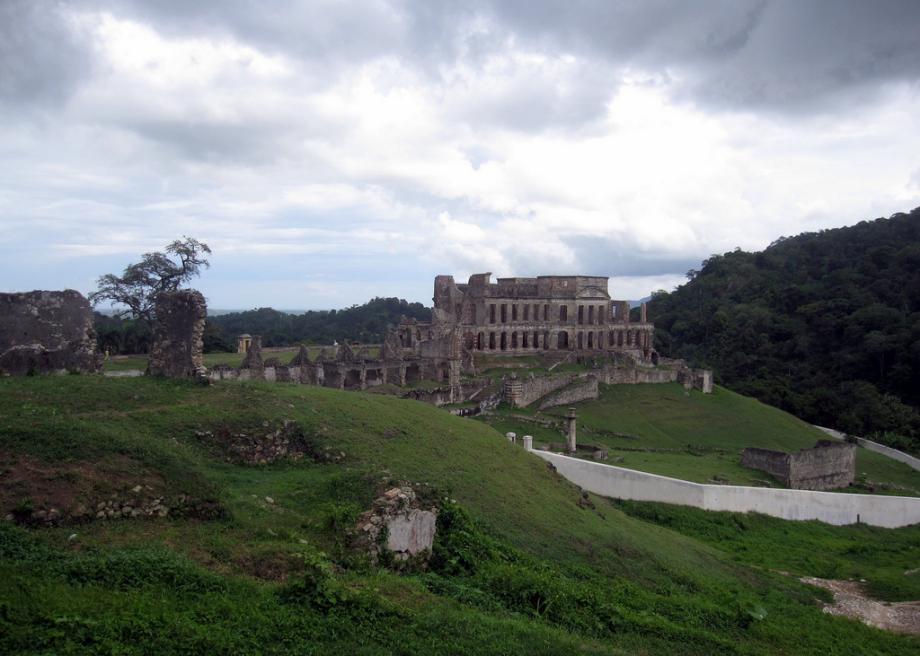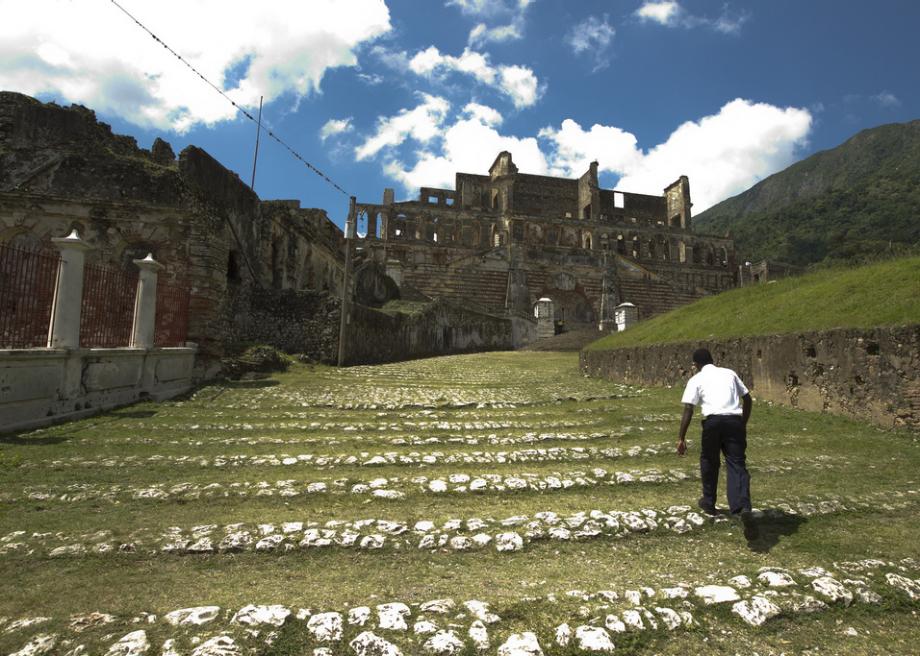Sans-Souci: The Ruined Haitian Palace of a Slave Turned Brutal Kleptocrat
Atlas Obscura on Slate is a new travel blog. Like us on Facebook, Tumblr, or follow us on Twitter @atlasobscura.
Sans-Souci Palace was once the home of King Henri Christophe I of Haiti, a former slave who became a key leader in the 1804 Haitian Revolution, when the small nation gained independence from France.
Haiti was divided in two in 1807, and Christophe became President of the northern half, officially known as the State of Haiti. Seeking a more lofty title, Christophe decided to establish a kingdom in the north, and in 1811 had himself crowned Henry I, King of Haiti. His full title also established him, among other things, as a self-appointed "Destroyer of tyranny, Regenerator and Benefactor of the Haïtian nation."
The new king needed a royal residence, so he ordered the construction of Sans-Souci Palace at Milot, a former French plantation that Christophe had managed during the Revolution. Thousands of slaves completed the building in 1813—Christophe's ruthless national policy of forced labor contributed to the swift construction—and soon became a bustling whirlwind of feasting and dancing, with grandiose gardens, artificial springs, and a system of waterworks.
But Christophe did not enjoy his sumptuous surroundings for long. The public resented him for forcing them to work long hours in the fields, and a stroke on Aug. 15, 1820 left him partially paralyzed. The autocratic king committed suicide 54 days after his stroke by shooting himself with a silver bullet. His son and heir to the throne was assassinated by bayonet 10 days later.
An earthquake in 1842 earthquake destroyed several parts of the palace, but the remaining edifices give a sense of its former grandeur. The building’s checkered history belies its name: sans-souci is French for carefree.
Palatial properties:
- Kazakhstan's Palace of Peace and Reconciliation is designed to represent all of the world's religious faiths
- The enigmatic Quinta de Regaleira is believed to hide symbols related to alchemy, Masonry, the Knights Templar, and the Rosicrucians
- The "Prussian Versailles" is as glorious today as when it was built
View Palais de Sans-Souci in a larger map




